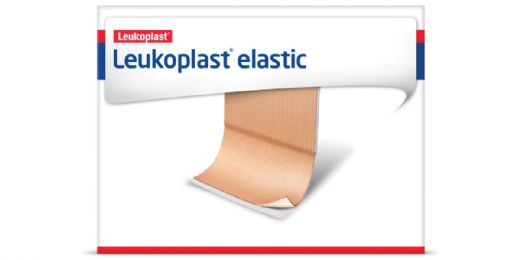



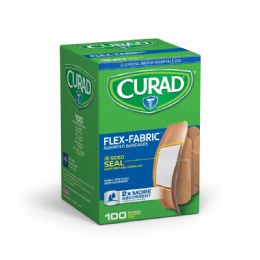

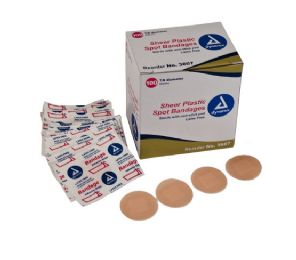

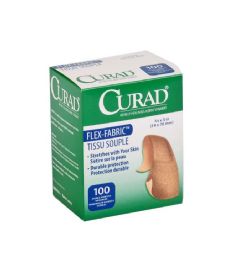
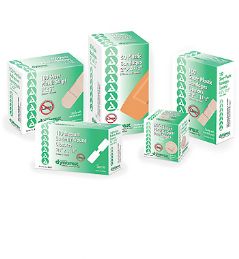
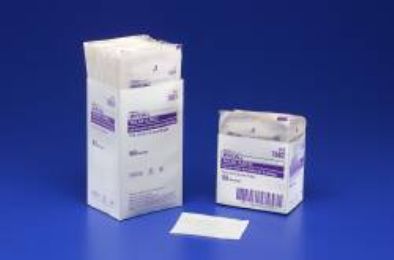
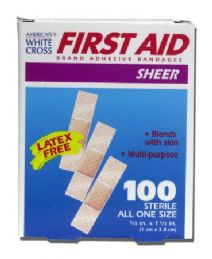
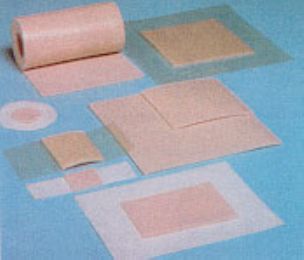

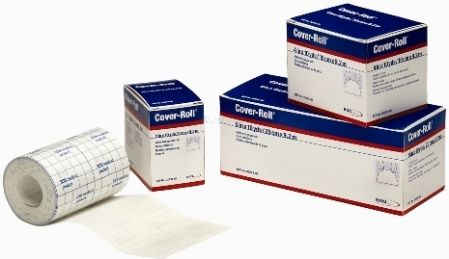
What are Various Types of Adhesive Bandages?
Adhesive bandages were invented as a way to protect small cuts and scrapes in the 1920s without the inconvenience and bulk of a full-sized bandage. The design has not changed much since then, but individual product features have modified to provide specific treatment for injuries on joints or limbs, smaller or larger injuries, and specialized burn care. There are also certain types of adhesive bandages that are saturated with medicated ointment to help speed healing and to prevent infection.
The 3 inch by 1 inch strip is the most familiar form of adhesive bandage. It is the most versatile style, used for everyday minor injuries and effective for small, shallow cuts and abrasions where the bandage can lay flat. When this type is wrapped around knuckles which are bent many times throughout the day, this bandage tends to wrinkle and the adhesive may fail. Therefore, manufacturers developed a butterfly shaped bandage which is designed especially for flexing joints. Newer rectangular designs feature tapered ends to allow for wrapping a finger as well.
Sometimes, a typical bandage is too obtrusive or large to use. For tiny wounds, such as a pimple or hangnail, small bandages are available in 1½ inch by ¼ inch strips. They also come in a 1 inch round for wounds located in awkward places where there may not be enough room for a rectangular strip. For wounds that cover more surface area, adhesive bandages are also available in larger sizes, up to 6 inches by 6 inches. These bandages are mostly absorbent pads with a half-inch strip of adhesive around the edge, and are commonly used for abrasions. The square shape helps cover a larger area than a rectangular bandage of the same size, and the thicker pad allows for more blood absorbency. Although not recommended for wrapping around flexing joints, this square shape will cover an entire adult shoulder or kneecap, and stay put as long as strenuous movement is avoided.
Adhesive bandages are normally made of latex, but the rise in latex allergies is moving the industry to develop alternatives. Fabric bandages are popular, and companies have developed latex-free plastics. Major adhesive bandage manufacturers offer most sizes and shapes in different plastics that are breathable, waterproof, sheer, or even see-through. A shift in the bandage industry is moving towards a thin neoprene, which combines all the advantages of the specialty plastics into one bandage. Most bandage companies offer medicated bandages in various sizes and shapes. Their pads are filled with antibacterial or antibiotic ointment to speed healing and prevent infection. Some more advanced bandages have thin strips of silver nitrate woven into the pad to help stop excessive bleeding. Some adhesive bandages are made specifically to treat burns. They are filled with a medicated gel that helps cushion and cool the burn while it heals.
What is an Elastic Adhesive Bandage?
An elastic adhesive bandage is made of a flexible elasticized fabric designed to cling to itself. It is most often used for compression on strains, sprains, and contusions to help reduce internal bleeding, and to limit swelling. These bandages are also used to secure heat packs or ice packs on an injured body part, and at spas to secure body wraps. It is easy to work with because of the adhesive quality of the bandage, and it usually stays securely in place without shifting or loosening. Removal is simple and painless since it clings to itself and not to skin or hair.
These types of bandages are usually made of stretch rayon and nylon, and some have a cotton backing to make them more comfortable. Most of them use latex to give them elasticity, but there are latex-free varieties available. It is important to read the label carefully and choose the type with the most appropriate material. They are generally washable and reusable, too. Adhesive bandages are available in a wide variety of widths, from 2 to 4 inches, to accommodate different body areas. For example, a 2 or 3 inch width would work on a foot or hand, and a 4 inch width would be better for an arm or leg. Since athletes use these bandages so much, they are available in a range of colors to coordinate with their uniforms.
Care must be taken when applying an elastic adhesive bandage so it is not so tight that it will inhibit blood flow. It should be snug enough to decrease swelling but not so tight it cuts off circulation. These bandages do not loosen up over time since they cling to themselves. Therefore, it is important to apply them properly the first time. Before an elastic adhesive bandage is applied, a washcloth or sock can be used to fill out any hollow areas. To apply the bandage, begin to wrap from beneath the injured area and continue upward, wrapping securely but not tightly. It should not be pulled so tight that it is stretched out as far as it can go. It is important to regularly check for signs that the bandage is too tight. It needs to be adjusted if the injured area tingles, loses feeling, turns bluish, or feels cold.
What is a Gauze Bandage?
A gauze bandage is a thin, woven fabric material that covers a wound to keep it clean while allowing air to promote healing and penetrate. It can be used directly on a wound, or to secure a dressing in place. These bandages are available in many sizes, are the most common type, and are good for hard to reach areas that may be difficult to dress. Gauze bandages are very versatile and can protect a wound on almost any part of the body. They work well on head injuries, burns, and large lacerations that need more than a simple adhesive bandage. At home, it can be used to cover scrapes on the elbows or knees, or cuts on hands and fingers. In a hospital, healthcare professionals use them to cover surgical sites.
When using a roll of gauze, the end is pulled out and place over a piece of wound dressing, such as a pad of cotton, and wrapped around the location of the wound. A piece of bandage tape can be used, or the ends of the bandage can be tied together to secure them and keep the material in place. When compression is needed to control bleeding, this bandage can be wrapped and tied tightly.
Hulet Smith, OT
Rehabmart Co-Founder & CEO
lb